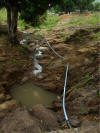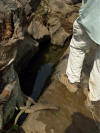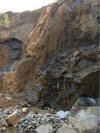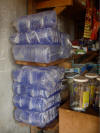Baoma Water Supply
-----------
-----------
-----------
-----------
-----------
-----------
Village of Baoma, Sierra Leone
NAVIGATION
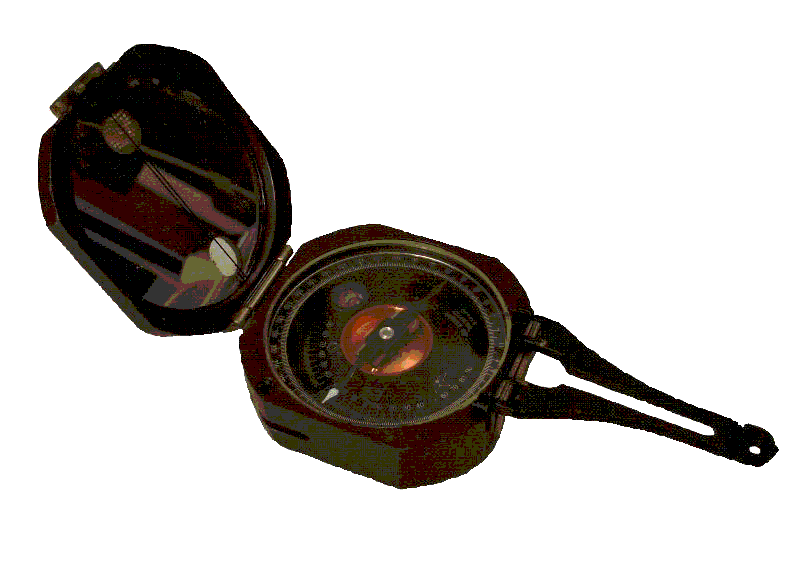
|
The villagers of
Baoma obtain water from several springs and from a few private wells.
Well-to-do villagers ("bombas"
in the Krio language) store water in elevated tanks and have gravity-fed
water systems in their homes.
Most of the villagers obtain water from springs, either through a
chaotic system of small-diameter pipes or else by carrying water in
buckets. The small-diameter
pipes are frequently broken or cut, and much water is leaked from the
pipe distribution system.
5.1. DIORITE
BEDROCK SPRINGS The Habbour,
Kamera, and West Side Springs all issue groundwater that has spent
almost all of its residence time in the ground within bedrock, and these
springs have little problem with potential pollution within the
respective source areas.
These springs, referred to hereafter as the
diorite bedrock springs, have
very good chemical quality water, although they contain some coliform
bacteria. Habbour Spring
Downstream from Habbour Spring Catchment Habbour Spring The operation of
the Habbour Spring is managed by Headman Eskay Ebomor.
Water from the Habbour Springs is distributed via pipe network
from a concrete catchment to private homes and to five tap stands in the
north side of the village.
Homes that receive piped water from the Habbour Spring are charged a
connection fee and a monthly fee, although Eskay and his assistant,
Moses Matu, are not always able to collect fees from users.
Slightly over an acre of land immediately upslope from the
Habbour Spring has been designated for special protection, and no
development is allowed in this area. Kamera Spring Pipe Distribution System below Lower Kamera Spring Catchment Kamera Spring The Kamera Spring
is owned and operated by Pastor Kamera.
Water from the Kamera Spring is distributed via pipe network from
a series of concrete catchments to private homes.
Monthly user fees are charged for the water.
Water from the Kamera Spring is reportedly treated, although the
efficacy of treatment was not evaluated by PSU EWB.
The land area upslope from the Kamera Spring is steep and
undeveloped.
West Side
Spring
West Side Spring Collecting water at West Side Spring The West Side Spring is owened by a member of the Pastor Martin's
Motema Spring
Motema Stream Valley View of Baoma from the divide between Baoma Valley and Motema Valley The Motema Spring
vent was not visited. The
outflow channel (Motema Stream) at the location visited by PSU EWB has
water chemistry similar to that of the diorite bedrock springs.
The discharge at the Motema Stream was approximately 100 gpm.
Based upon its position and other factors, it is likely that the
Motema Stream is fed by one or more diorite bedrock springs. Quarry Springs
5.2
ALLUVIAL SPRINGS Garden
Spring Garden Spring Garden Spring, drinking water spring vent The highest-yield
spring, the Garden Spring, has two main vents.
One vent is dedicated for drinking water supply, and one is
dedicated for washing. Both
of the spring vents receive groundwater from beneath much of the
village, and both appear to issue from the bottom of a gravelly
streambed deposit. Both of
these vents are affected by the on-lot latrines, livestock, and other
pollution sources. The Garden Spring
is managed by headman James Ceci.
The drinking water vent is fenced, and rules to protect sanitary
quality at thse spring vent are actively enforced.
At the time of the PSU EWB visit in December 2011 the drinking
water vent was discharging approximately 40 gpm.
The washing water vent had a slightly lesser discharge rate, and
also had a faint sulfurous odor.
No local rock or soil condition is known to cause a sulfurous
odor, so the sulfurous odor was attributed to pollution from the
village. The Garden Spring
was the only spring that was found to have a measurable level of
nitrate-nitrogen (approximately 3 ppm) during the December 2011 EWB
visit, which is consistent with contamination from latrine and livestock
wastes in the village. Although the water quality at the Garden Spring is inferior to that of the diorite bedrock springs, the flow at this spring is persistent throughout the dry season. It is likely that the groundwater that is discharged at the Garden Spring originates from uncontaminated flow in multiple diorite bedrock fractures (similar to the individual diorite bedrock springs). Groundwater flow from these multiple fractures converges at local, topographic low areas beneath the village, acquires bacterial and nutrient contaminants, and is discharged at the Garden Spring vents
5.3.
DUG WELLS Some villagers have on-lot, dug wells. Due to the prevalence and proximity of latrines, the sanitary quality of water from dug wells in the village is poor.
5.4.
PURCHASED WATER Many villagers purchase drinking water in 250-ml plastic bags. Here are bundles of 25 bags in a store in Baoma. |
